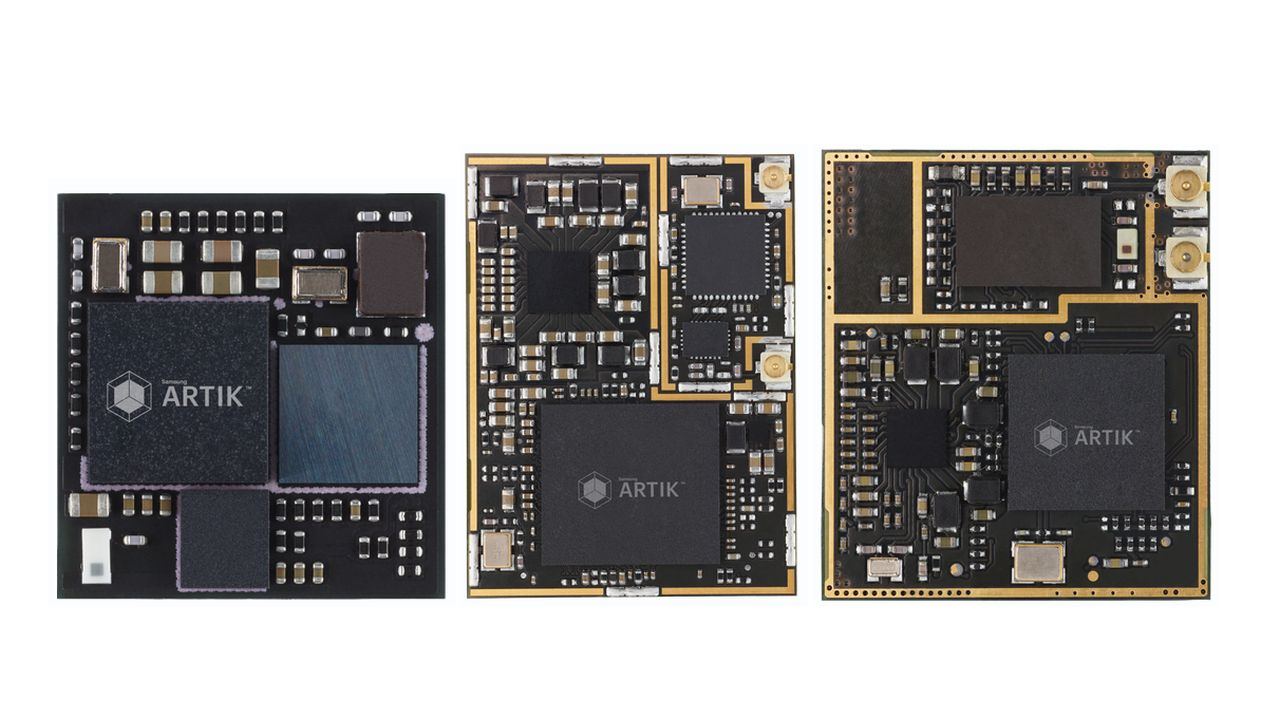Samsung packs Galaxy S4 firepower in tiny ARTIK platform
IoT is going to be cooler now

Samsung Electronics unveiled a new family of system-on-chip (SoC) called ARTIK, one that is set to compete with Intel's Curie portfolio as the two giants tackle the growing Internet of Things market, one worth a potential $3 trillion (around £1.9 trillion, or AU$3.7 trillion) over the next few years.
Three models have been introduced with more likely to follow: ARTIK 1 has the smallest footprint (12mm x 12mm) and packs a MIPS-based MicroAPTIV dual-core processor clocked at 250MHz and 80MHz respectively. There's also 1MB of memory, 4MB of flash storage, Bluetooth, a secure element and a 9-axis motion sensor.
Its bigger sibling, the ARTIK 5, is just over twice the size, packs a dual-core ARM Cortex-A7 processor clocked at 1GHz paired with a Mali 400MP2, a configuration similar to what powered the four-year old Samsung Galaxy S2. The rest of the specs remind us of what we'd find in an entry level smartphone: 512MB of RAM and 4GB of storage.
ARTIK 10, the largest of them all is also the most powerful model with an ARM-based octa-core that appears to be using a big.LITTLE architecture with four Cortex-A15 cores clocked at 1.3GHz and four Cortex-A7 clocked at 1GHz (similar to a Galaxy S4 smartphone variant from 2013). There's 2GB of RAM, 16GB of onboard storage, a full set of security features, Bluetooth connectivity as well as Wi-Fi and Zigbee.
While the ARTIK 1 uses the low footprint Nucleus OS, ARTIK 5 and ARTIK 10 are both bundled with the Fedora-based Linux distribution Yocto 1.6; Windows 10 for IoT is likely to be compatible as well.
Sign up to the TechRadar Pro newsletter to get all the top news, opinion, features and guidance your business needs to succeed!

Désiré has been musing and writing about technology during a career spanning four decades. He dabbled in website builders and web hosting when DHTML and frames were in vogue and started narrating about the impact of technology on society just before the start of the Y2K hysteria at the turn of the last millennium.